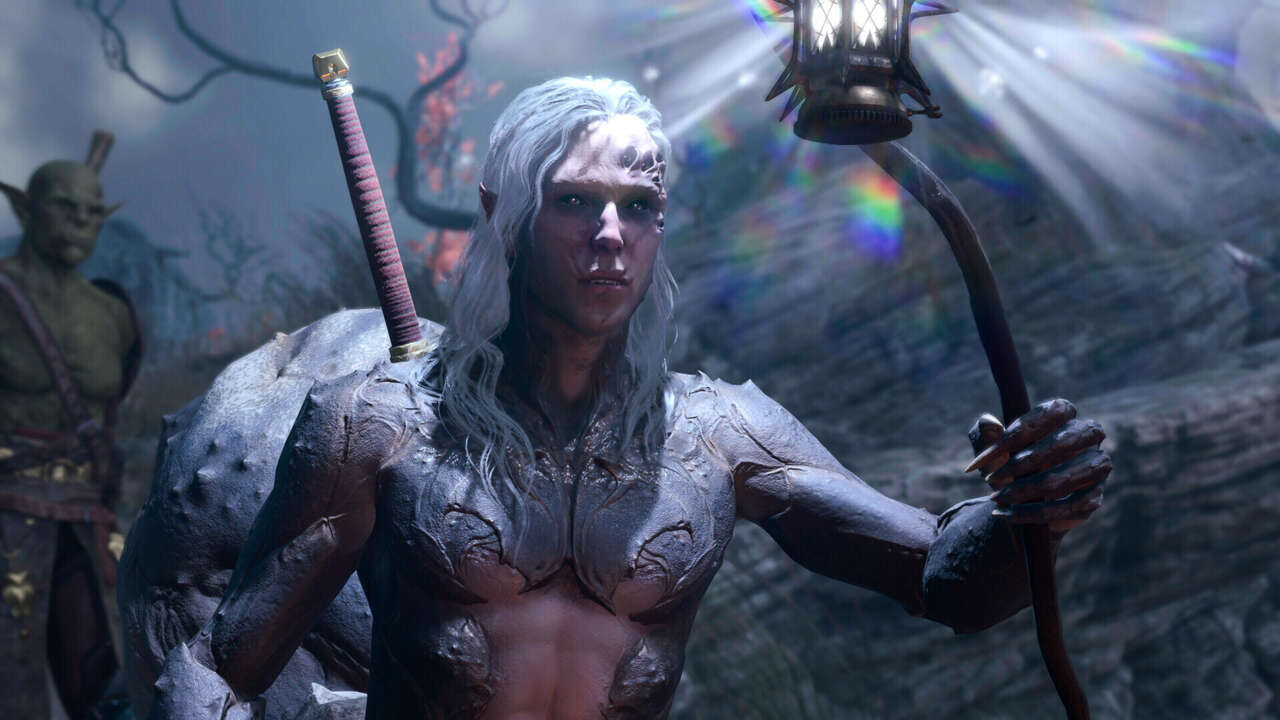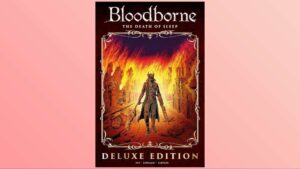Given how immensely popular Baldur’s Gate 3 was when it fully launched in 2023, I think it’s easy to forget that the journey there had a lot of us playing the first act of the game for the better part of three years. In that time, the idea of playing Dungeons & Dragons was seeded within me, growing more and more annoying and harder to ignore by the day as it dug its roots into my brain. By the time I actually finished a full co-op run in October 2023 (I have kids, it took a while, forgive me), I’d also fallen into watching Dimension 20. Before long, my desire to play Dungeons & Dragons had become a full creepy eldritch tree that wasn’t letting me think about much else.
You can imagine my joy when I got an invite into a mate’s group, and we’ve been playing at least twice a week since. I did try to pick up Baldur’s Gate 3 again to do an evil playthrough, but it just wasn’t the same; it lacked all of the stuff I love about D&D, namely the very silly voices and the fully reactive world. The change in immersion from “I choose what to say from a list,” to “I say what I want at any given time” is one that video games just can’t compete with. So, at this point, I just sort of assumed that Baldur’s Gate 3 was done for me.
Despite that, the news about Patch 8 started to trickle out, and by gumbo, I couldn’t help but want to play with the new subclasses (even though mods have added them in unofficial capacity already, and I’ve ended up playing with mods anyway). I was apprehensive about how much I’d enjoy it, but it turns out learning D&D back-to-front actually means I’m substantially better at Baldur’s Gate 3 now, and more importantly, I completely understand the dice that are rolling in the background.
See, I understood Baldur’s Gate 3 as a game on its own, that’s a big part of the job, but I didn’t really grasp the maths of it all. Adding 1d4 to your attack rolls and saving throws sounds like the world’s least interesting buff if you’re not familiar with D&D 5e. However, those in the know understand that Bless is one of the best low-level spells in the game, and it remains relevant no matter what level you’re playing at, something a lot of spells can’t manage.
Baldur’s Gate 3 – Multiclass Guide
Size:
Want us to remember this setting for all your devices?
Sign up or Sign in now!
Please use a html5 video capable browser to watch videos.
This video has an invalid file format.
Sorry, but you can’t access this content!
Please enter your date of birth to view this video
By clicking ‘enter’, you agree to GameSpot’s
Terms of Use and Privacy Policy
Also, despite the game doing a good job of telling you what percentage of a chance your attacks have of working, it’s only when you learn the game and the importance of different stats and their corresponding saving throws that you can really start working around them. Sacred Flame is infamous for missing in Baldur’s Gate 3, and that’s largely because it’s a dexterity saving throw, and almost every monster in D&D 5e has at least decent dexterity. If you work in a few options that target strength or intelligence saving throws instead, you can really boost your chances of dealing damage.
That’s all just from understanding D&D 5e though, and while better understanding a game’s mechanics is always nice, it’s not enough to actively boost enjoyment. Not on its own, at least.
Instead, while Baldur’s Gate 3 lacks the main thing I and many others enjoy about Dungeons & Dragons–namely, the roleplaying–it does allow someone to play a far more mechanical and exact approach to the 5e system, which isn’t something a lot of Dungeon Masters do. Most DMs referee as the rules are intended (RAI) not written (RAW), or homebrew their own unique variations of existing rules to create a more enjoyable experience for their players–it’s not just about mechanics, it’s about vibes. The vibes are sublime in BG3 as well (and Larian technically homebrews a few rules too, like changing the action of drinking a potion to a bonus action and shortening Short Rests from an hour to instant), but they’re also set in stone thanks to the programming and cannot be changed or adapted based on individual situations. Playing BG3 is far closer to playing D&D 5e RAW than the usual experience of playing the game in person at a table, where DMs and players usually follow RAI to better focus on roleplay, not mechanics.
Because of this, when jumping back into Baldur’s Gate 3, the main thing I was thinking about was the mechanics. I’m thinking about building abhorrent characters that make no sense from a roleplay perspective, but make perfect sense when it comes to just being an absolute beast when it comes to regularly succeeding on perception checks (which, like in D&D, is one of the two most rolled and valuable skills in the game alongside insight), and dominating on the battlefield. It’s not about “why did my paladin multiclass as a sorcerer and then a warlock and then a bard,” you can just do it, logic be damned.
You can also respec at will to check out all the potential builds you could ever dream of. Sure, patch 8 has added 12 new subclasses, which is awesome, but the mods do even more than that. You can play with a tweaked version of the 2024 rules, add in new spells, make the game go to level 20, and even play with some third-party content like MCDM’s Illrigger class which, if we’re being reductive, is a hell-based paladin class.
Do you know how hard it is to try all of that out in D&D without leaving your DM withered like a husk? Nearly impossible. There are already so many DM husks that have to hibernate for thirteen years before reemerging along with the Cicadas, so being able to test out how these builds feel without a DM means that you can test if you like the playstyle from a mechanical sense. It also means you can maybe scratch the itch of silly builds you find online that a DM might not allow in their game because it doesn’t fit the lore or vibe of their world.
That freedom of mechanical messing around isn’t something that’s always as simple in the TTRPG version of the game. It can be, for sure, and while I and many other DMs think respeccing is perfectly fine, especially if you’re not having fun with your current character, it’s nice to justify any major transformation in an ongoing adventure with a magic item, a gift from the gods, or some other narrative development. Being able to avoid the narrative justification and all of that complexity in BG3 to just embrace becoming a little combat gremlin is freeing in a way, and you never have to worry about feeling like you’re annoying your DM. On top of that, you still get all of the great writing and amazing story variations that Baldur’s Gate 3 offers, all of which just adapt to any class changes you might make.
So, despite me thinking that I was done with this once-in-a-lifetime RPG, it’s still got plenty to offer me when I just want to switch my brain off a little bit and enjoy D&D without any other people. It’s not something I’d considered for some reason, and if you were in the same boat as me, please take this as your sign to go ahead and jump back in with your weirdest builds and have some fun, just enjoying the playground the game offers. D&D has added onto Baldur’s Gate 3 in a way I just wasn’t expecting, and I’m overjoyed to be able to continue enjoying both.









